An Anecdotal History of Volcanos from around the World
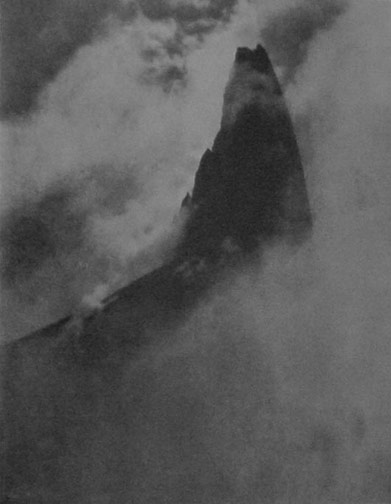
Frank Perret, an early vulcanologist, had a habit of monitoring the seismic activity of Mount Vesuvius through clamping his teeth around the metal bedposts in his room, which were embedded in cement on the slopes of the volcano.
During a major volcanic explosion of Mount Pinatubo in June 1991, rumours spread that the volcano was spewing out diamonds. People set about frantically sifting through fallen ash, but the stones proved to be quartz crystals formed by the hardeneing of magma inside the volcano.
On a diving expedition in 1981, Graham Durant, a geologist specialising in young landmass, had the opportunity to work on Surtsey, an Icelandic island formed in 1963 through an underwater eruption. Graham felt there was something moving about 'The idea of standing on this newly created land.'
Pliny the Elder perished in the year of 79 AD, while observing the eruption of Mount Vesuvius. By account of his nephew, "They consulted together as to whether they should hold out in the house, or wander about in the open. For the house now tottered under repeated and violent concussions, and seemed to rock to and fro as if torn from its foundations. In the open air, on the other hand, they dreaded the falling pumice stones...yet this, by comparison, seemed the lesser danger of the two; a conclusion my uncle arrived at by balancing reason and the others by balancing fears. They tied pillows upon their heads with napkins; and this was their whole defense against the showers..."
On one occasion, I had a conversation with a woman who took part in an extreme expedition. During a field work session inside the crater of an active volcano that was filled almost to the brim with molten lava, her heat-sensitive fireproof full body uniform began to incinerate. The field session was put on hold.
Emergent Landmass
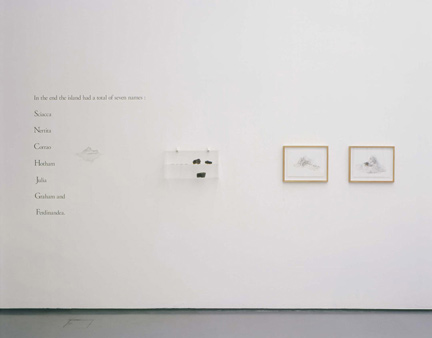
Precisely between Pantelleria and Sciacca, on the trade route between Europe and Malta, a volcanic island sprouted in 1831, and from its birth to its disappearance its development was followed and studied by the most illustrious scientists of the epoch. On June 28 1831 there was a series of earthquakes that caused lesions in many houses. The sea was violently shaken and on July 4 the sulfur was in such quantity in the water that it blackened objects of silver. July 13th there was a column of smoke, and it was said
The place becomes annoyed with sea.
From afar, it was thought to be a steamboat en-route; then with the persistence of smoke, to be a steamboat in flames. Two days later sailors of Sciacca returned from fishing, noticing there were many fish afloat - some corpses - others senseless. After a pair of days started the eruption of lapilli, of pumices of tufi and of fiery cinders falling red-hot into the sea. July 17 one islet grew quickly in dimensions and height. The sanitary Deputation of Sciacca sent a fishing boat to the place and commanded by Michael Florins, planted an oar on the strata of the dawning volcano, like first discoverers, and then carried the news to the coast.
In response, The Real Society and the Society of Geology from London adopted the name of Graham, after Captain Graham who had first taken note of the island from the deck of his ship The Courier and had claimed the emergent territory for the empire by raising a flag. Upon discovery of the island, he sent his crew armed with a pail to collect an assortment of geological samples as proof of discovery.
The Bourbon Kingdom of the Two Sicilies planted a flag and named the island Ferdinandea, after King Ferdinand II.
The French Derussat hoisted a flag on the taller part of the island, to which he gave the name of Julia remembering the apparition of the island came in the month of July. He likened the recent eruption to a freshly uncorked bottle of champagne.
In the end, the island had a total of seven names :
Sciacca, Nertita, Corrao, Hotham, Julia, Graham and Ferdinandea.
Within months the perimeter of the new island decreased. By December 17th two officers from the topographical office in Naples found that the island was gone, slipping beneath the waves where it remains today as a constant hazard for shipping. Diplomats report that the submerged island last featured in an international dispute in 1987, when a US warplane patrolling the area during a confrontation with Libya mistook the submerged tip of Graham Island for a Libyan submarine and dropped depth charges on it. More recently, a man persuaded Ferdinand's descendant, Prince Carlos of Calabria, to allow a marble plaque inscribed with the words
This piece of land, once Ferdinandea, was and shall always belong to the Sicilian people.
to be placed 20 meters below the surface of the sea on the remains of the underwater island. Weeks later, a diver found the plaque smashed to pieces.
Captain Graham’s pail of rocks and soil stand as only one of two samples ever taken from Ferdinandea. This collection of young geology is currently housed in a small rectangular box in the storage of the Natural History Museum. At the time the island initially eroded, to avoid embarrassment, it was proclaimed that Britain was the only nation to have an entire island in a pail.
The Tragedy of Martinique
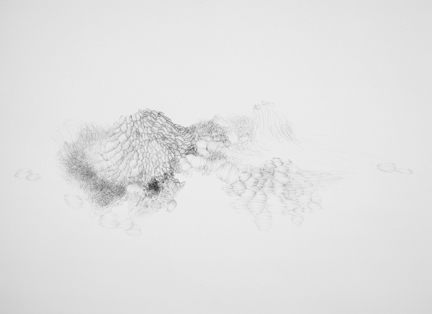
Two months ago, at the library of the Geological Society in London, I happened across writings by Angelo Heilprin, an active geologist at the turn of the twentieth century who may also be distant relative. While he is known for a variety of innovations, his photographs of Mount Pelee, along with those by Frank Perret, remain some of the most beautiful ever taken of an eruption.
On April 23, 1902 Mount Pelee, a seemingly dormant volcano on the island of Martinique, began to shows signs of disquiet. Though known to be a volcano, Mount Pelee was looked upon as practically extinct. The people had long ceased to fear it. No one expected that grand, slumbering, tranquil hill would ever spurt forth fire and death. There were no rocky cliffs, no crags, no protruding boulders. The mountain was peace itself. Children played in its bowers and arbors; families picnicked there day after day; hundreds of tourists ascended to the summit and looked with pleasure at the beautiful crystal lake which sparkled in the sunshine in the crater of the volcano.
In a letter to her sister, Mrs. Thomas T. Prentis described the situation after April 23rd as such;
"My Dear Sister: This morning the whole population of the city is on the alert and every eye is directed toward Mont Pelee, an extinct volcano. Everybody is afraid that the volcano has taken into its heart to burst forth and destroy the whole island. There is not a horse to be had as they being kept in readiness to leave at a moment's notice. Last Wednesday, I was in my room with little Christine, and we heard three distinct shocks. They were so great that we supposed at first that there was some one at the door, and Christine went and found no one there. The first report was very loud, and the second and third were so great that dishes were thrown from the shelves and the house was rocked. "The city is covered with ashes and clouds of smoke have been over our heads for the last five days. The smell of sulphur is so strong that horses on the streets stop and snort, and some of them are obliged to give up, drop in their harness and die from suffocation. "My husband assures me that there is no immediate danger, and when there is the least particle of danger we will leave the place. There is an American schooner, the R. F. Morse, in the harbor, and she will remain here for at least two weeks. If the volcano becomes very bad we shall embark at once and go out to sea."
The city was invaded by ground-dwelling insects and snakes, who fled the slopes of the volcano as earthquakes and ash clouds became more frequent. Horses, pigs and dogs screamed as red ants and foot long centipedes crawled up their legs.
On May 5th Mount Pelee was increasingly erratic, heating the sparkling crater lake to boiling point. Eventually, the edge of the crater gave way. Scalding water mixed with mud slid down the slopes of the volcano burying 23 people en-route. Residents of nearby St.Pierre became concerned. Talk of evacuation began. The fatal eruption of Mount Pelee took place on May 8th.
The evacuation of St. Pierre never occurred, though not quite for the reasons that might initally come to mind. Local elections were to take place on May 11th. Under order from the ministry in Paris, the Governor was told he could not risk an evacuation of his city so close to election day, as the majority of his voting pool would be moved elsewhere on the island. To remedy this unseemly situation, he hired a team to investigate the risks of imminent eruption, in the hopes of calming his community when the experts would, of course, confirm there was no danger at all. Though tensions eased, certain residents of St. Pierre were still afraid and fled to the town of Fort-de-France. To avoid further panic, the Governor urged local papers to downplay the danger of the volcano. In addition, he stationed troops on every road out of town. Their orders were to turn back residents of St. Pierre, bar their attempts to leave the city and encourage them to swiftly return home. Wealthy patrons of the Governor were given permission to flee not only the town, but the island.
On May 7th, thousands of miles away, the sky over France turned black with warning. Soot and water, like ink, fell from the sky.
On May 8th, Mount Pelee erupted with a force beyond all expectation. In almost an instant, virtually all of the 28,000 residents of St.Pierre were dead. The Governor, his team of experts, Mrs. Thomas T. Prentis and her family were among them. There were only three survivors, a cobbler, a convinct and a young girl.
Louis-Auguste Cyparis was 25 years old at the time of the eruption. He was in jail for wounding one of his friends. Towards the end of his sentence, he escaped for one night and went dancing until daybreak. In the morning he turned himself into the authorities, who promptly sentenced him to one week solitary confinement in the dungeon of the prison. He experienced the eruption through thin slats cut into the wall of his cell, receiving the burning air and ash into his lungs without a view of the events which unfolded outside. Saved by the thick walls of his cell, he survived. Afterwards, he was pardoned and eventually joined the Barnum and Bailey Circus, where he became known as the 'Lone survivor of St. Pierre'.
Following this catastrophic volcanic event, an astonishing geological phenomena was witnessed for the first time in human history. ‘The Tower of Pelée’, a volcanic pillar 150 meters wide and 300 meters high, emerged from the crater of the volcano. It was said to be twice the height of the Washington Monument and equal in volume to the Great Pyramids.
Upon observation of this geological monument, Angelo Heilprin simply stated it was “a memorial of nature for the 30,000 dead who are lying buried in the city”. Within a year, the tower was gone, eroding into the depths of the crater.
In Memoriam of a Vulcanologist
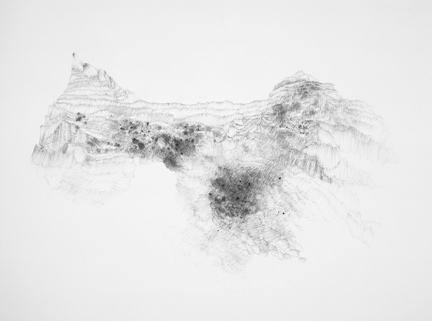
September 18, 1907
Through the death of Professor Angelo Heilprin, on the 17th of July last, the Franklin Institute lost not only one of its most distinguished members, but also one of the most welcome of its frequent lecturers and a recognized leader in the search for knowledge. Applied to our daily life, his deeper insight into the facts of nature brings us to a more normal attitude towards its varying manifestations and enables us to deal more effectively with its various forces.
In its recent chronicle of the scientist's death, The Press said that in matters of his work, it is characteristic of Professor Heilprin that "...he profitted not a penny...though many men obtained millions for services of a trifling character compared with those he had rendered." He was as blithe and genial as he was earnest and resolute, as modest and unassuming as he was fearless and determined. In the pursuit of his investigations, whether in the fire-scathed ruins of St. Pierre or amid the icy wastes of the frozen north, or surveying the plateau of Mexico from the snow-capped summit of Orizaba, Heilprin's purpose was simply that of the student scientist, whose function is first of all to light the truth.
It was for this that he repeatedly climbed Pelee and with death and destruction threatening close about him made a deliberate and careful study of its fiery outpour while the volcano raged in all its fury and was going, as he expressed it, "in full blast."
In the volume entitled "Mount Pelee and the Tragedy of Martinique", the story of his findings is simply but graphically told. As he had pressed into the stormy wastes of the Arctic wilderness in search of Peary ten years before, he in this wilderness of fire pressed farther and farther towards the summit of the volcano, until he stood high among the clouds, amid lightning flashes and rolling thunder, and under a torrent of rain, with the outpour from the crater blackening the air about him and his few companions.On the first ascent the rain storm forced him to retire, but the following day with George, Jacacci and Varian, he ascended again and pushed through a scorching heat to within four feet of the fiery abyss, standing on a foothold the stability of which he knew nothing and looking directly down into the crater's mouth. Kennan, in his report of the ascent, remarks : "I must pay the highest tribute to Heilprin. He is modest and brave, a superb mountaineer and the nerviest and pluckiest man I ever knew. The ascent was the most terrifying experience of my life."
This was on the first of June, 1902. On the 30th of the following August, Heilprin made another ascent of the mountain with a view to determining the nature of the cone that was apparently developing in the midst of the volcano's crater. As they approached the summit the party was halted by a fusilade of exploding bombs horizontally shot out from the roaring column of steam and incandescent scoria that was being intermittently belched out from the seething crater, miles high into the air. Leaving his companions, Heilprin pushed upward to a point just below the crater's rim, crouching on the palpitating ground for all possible safety, and there made his observation amid the crash and roar of the terrific phenomena. That night after his return to the base of the mountain, the tragedy of St. Pierre was repeated all about him. A scorching blast, like that of the fatal 8th of May, shot downward from the fiery summit of Pelee, seeping through the nearby villages of Morne Rouge and Ajoupa Bouillon, carrying destruction to everything in its path and death to fully fifteen hundred of their inhabitants. The scientist, housed in a depression nearer the crater's base, was fortunately beneath the line of the fiery discharge and so escaped with his life.
In the course of these memorable explorations, Heilprin made a close study of the unique phenomenon which he named The Tower of Pelee. He deduced that the obelisk of lava began to form in the eruption of 1851 and continued to increase in stature until the eruption of 1902. In effect, this core of solid magma slowly choked the throat of the volcano, preventing it from following a normal course of action. A vertical eruption could not occur and unhappily it burst forth in a horizontal direction directly in the path of St. Pierre. Heilprin's observations have thrown new light on the history of volcanic activity, which hitherto had remained inexplicable , giving explanation to the Vesuvian eruption of the year 79 and the tragedy of St. Pierre.
In the spring of 1906 he made a journey into the interior of British Guiana to study the great equatorial forests of that region. It was during that journey that he contracted a tropical fever which eventually carried him to his untimely grave. Angelo Heilprin lived but 54 years, yet within that shortened span he accomplished a work of such large moment as would well suffice the compass of the longest lifetime.
Heilprin's character and the esteem in which he was held by all who were privileged to know him can be summarized by a quotation from Commander Peary's recent letter. He says : "I have always found him ready, loyal and superlatively able. When I named one of the greatest of Greenland glaciers and later one of the most northerly lands in the world after him, it was no perfunctory action, but a tribute of the deepest regard and friendship."
Heilprin Land
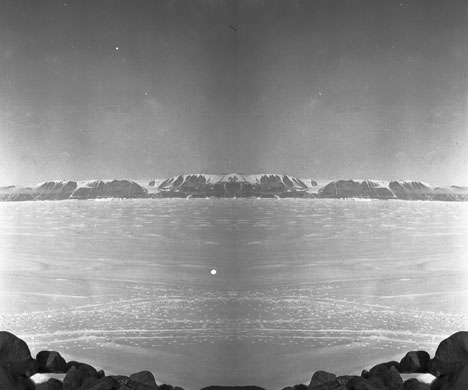
I met with Graham Durant, the geologist I mentioned earlier, once five years ago. He was interested in Ferdinandea because, in addition to being linked to his area of expertise, to put it simply, one of the island's many names happened to be Graham.
Recently, I had the opportunity to view Ferdinandea under a microscope at the Hunterian Museum in Glasgow. The only other mineral samples that remain of this island were being housed between two glass slides, a fifteen-minute walk from my apartment. It turns out the very same sample on view was actually found by Graham Durant during one of his underwater expeditions. Obviously, there could be no one else to visit Graham but Graham.
In daily life, it is impossible to have unmediated contact with geothermally sourced heat; as to do so would be to incinerate. To make more intimate sense of this phenomena, I boiled a small pan of milk in a 100 degree Celsius sulfur spring in the crater of an active volcano. To moniter seismic activity, Frank Perret used his teeth.
Ideas, like landmass, perpetually shift, lay dormant and erupt again. Known territories submerge. New land mass forms.
The evacuation of St. Pierre never took place. Recent events...floodwater, failed levees, road blockades, sound all too familiar if we replace liquid rock, smoke and ash with water. A section of Greenland is named after Angelo Heilprin as a tribute to the time he set out on a rescue mission and brought his good friend to safety from that frozen terrain.
There are different approaches to dealing with a potential catastrophe. For Heilprin, whether on the crest of a volcano or in a frozen wasteland, the impetus to take action at the edge of the abyss was always the same.